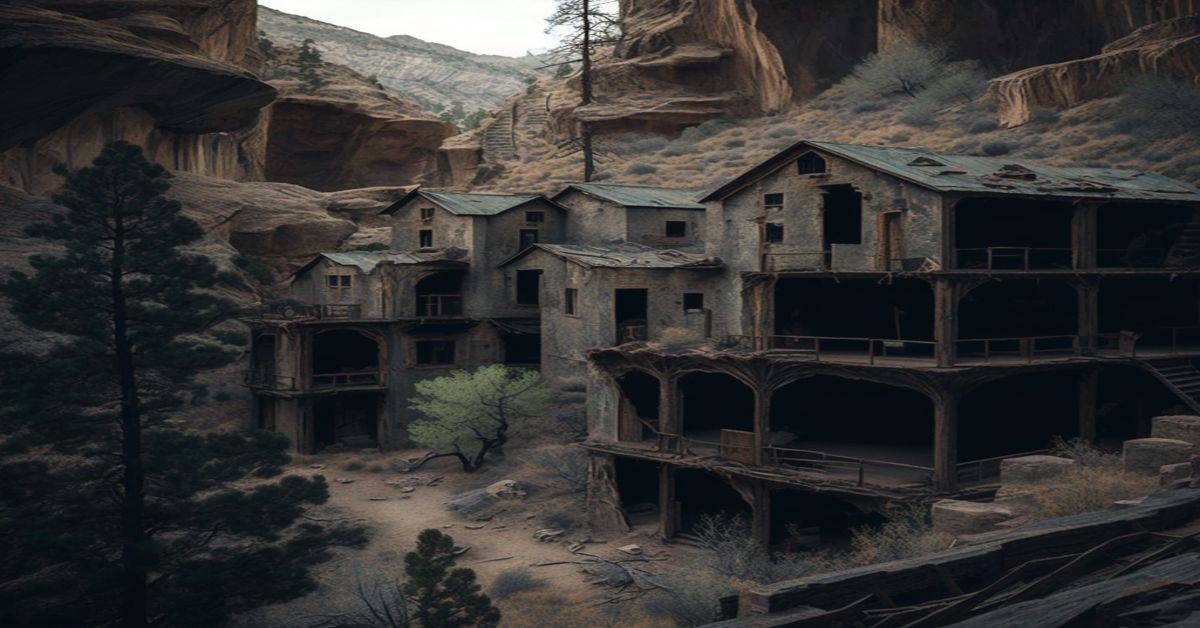Cisco, Utah, a once prosperous oil and natural gas town, is now a deserted and abandoned ghost town. Founded in the late 1800s, Cisco became Utah’s largest producer of natural gas and oil, thanks to its location along the Denver and Rio Grande Western Railroad.
However, the construction of Interstate 70 in the 1950s diverted traffic from the town, leading to its eventual economic decline and abandonment. Despite its current state, many of the town’s original buildings, including the Cisco Post Office, still stand, reminding it of its past.
In this article, we will delve into the history of Cisco, from its origins as a watering stop for steam engines to its rise as a major oil and gas producer. We will also explore the factors that led to its decline and eventual abandonment, including the impact of the construction of Interstate 70.
Additionally, we will examine the remaining buildings and their historical significance, providing insight into the daily lives of those who once called Cisco home.
Key Takeaways
- Cisco was founded as a watering stop for railroad steam engines and became Utah’s largest oil and natural gas producer.
- The construction of Interstate 70 in the 1950s diverted traffic from the town, leading to its economic decline and abandonment.
- Despite its decline, Cisco has become a popular destination for ghost town tourism, particularly for photographers and history buffs.
- Cisco’s remaining structures offer a fascinating glimpse into its past and represent the town’s history.
History and Origins
The history and origins of Cisco are rooted in its early days as a watering stop for the railroad’s steam engines in the 1880s. The town’s significance grew as nearby cattle ranchers and sheepherders began to use Cisco as a livestock and provisioning center. Over 100,000 sheep were sheared in Cisco before being shipped to market.
The railroad’s impact on Cisco cannot be overstated, as it played a crucial role in the town’s development and growth. However, not just the livestock industry contributed to Cisco’s history. The discovery of oil and natural gas made Cisco the largest producer in Utah. This led to a significant boom in the town’s economy as people traveled more to visit the area.
Unfortunately, Cisco’s decline was inevitable, as the construction of I-70 bypassed the town altogether, leading to a decline in its economy and population. Despite this, many boarded-up houses and a truck terminal still appear as a town in business.
Economy and Decline
Following the introduction of I-70, the economy of this former provisioning center and livestock hub experienced a decline, with many of its buildings now boarded up or abandoned.
The town’s proximity to the interstate made it easy for travelers to bypass Cisco, leading to decreased business for its gas stations, restaurants, and other establishments.
As a result, the town’s population dwindled, and many residents eventually left for greener pastures. Despite its decline, Cisco has become a popular destination for ghost town tourism, attracting visitors from all over the world.
The town’s abandoned buildings and unique history make it an interesting place to explore, with many visitors coming to see the remnants of the oil and gas industry that once thrived here.
While modern transportation may have contributed to Cisco’s downfall, it has also allowed the town to preserve its past and become a unique tourist destination.
Buildings and Location
One of the most intriguing aspects of this former provisioning center and livestock hub is the remaining structures that offer a glimpse into its fascinating past. Despite the economic decline, Cisco still has a dozen or so buildings worth exploring.
These buildings are a testament to the town’s history and have become a popular destination for photographers and history buffs.
The Cisco Post Office is the most prominent building in Cisco. It was built in the early 1900s and has since been restored. The post office is a popular spot for photography and offers a glimpse into the town’s postal history.
Other buildings worth exploring include the boarding houses, the old schoolhouse, and the truck terminal. These buildings offer a glimpse into the town’s industrial and residential past, making them a must-visit for anyone interested in exploring ruins and the history of the American West.
Frequently Asked Questions
What led to the decline of Cisco’s oil and natural gas industry?
The decline of Cisco’s oil and natural gas industry can be attributed to environmental factors and government regulations. The discovery of new reserves in other areas also contributed to the decline.
Besides the post office, are there any notable landmarks or historic sites in Cisco?
Besides the Cisco Post Office, there are several abandoned structures and landmarks in Cisco, Utah that attract ghost town tourism. These include a truck terminal, boarded-up houses, and remnants of the town’s once-thriving oil and natural gas industry.
How has the local community responded to the decline of Cisco’s economy?
The local community of Cisco responded to the decline of the town’s economy by implementing economic diversification strategies, such as promoting tourism and outdoor recreation. However, the success of these efforts remains limited due to the town’s remote location and limited resources.
What impact did the railroad have on the development of Cisco?
The railroad significantly impacted the economic growth of Cisco, Utah. It served as a watering stop for steam engines and a livestock and provisioning center for nearby ranchers and sheepherders. Over 100,000 sheep were sheared here before being shipped to market.
Are there any plans to revitalize or repurpose the abandoned buildings in Cisco?
What are the repurposing opportunities for the abandoned buildings in Cisco? There are no known plans for revitalization, but potential investors could consider turning the buildings into tourist attractions or industrial spaces.



